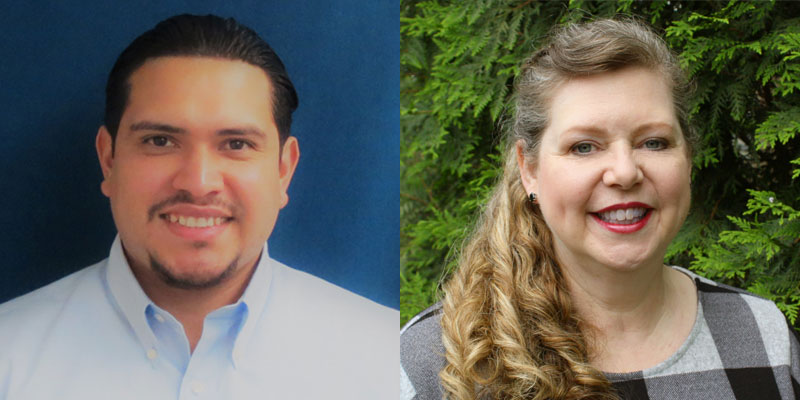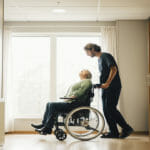
March 4, 2020, was the day our executive director sent out a notice to all residents, families and staff that the coronavirus was a reality and it would be impacting our scenic 220-acre continuing care community in Montgomery County, Maryland. This is the story of how our campus, which serves independent living residents, along with 108 assisted living residents and 190 skilled nursing and rehabilitation patients, dealt with COVID-19.
Following the letter and over the next several weeks, we implemented staff screening guidelines, disinfection measures, personal protective equipment distribution and recommended infection control Guidelines provided by the Maryland Department of Health and Centers for Disease Control and Prevention. All went well until one resident developed a fever on March 28, 2020. The patient was placed on isolation precautions pending COVID testing, conducted with the assistance of our local health department. The devastating results indicated positive for COVID-19.
Our director of nursing’s, assistant director of nursing’s and unit manager’s leadership guided staff by example in how to manage this patient’s care by providing direct care and even disinfecting the room surfaces including walls, floors and furnishings as part of their daily routine. We implemented daily monitoring of residents including temperatures and Pulse Oximeter readings. Anyone with fevers had tests to rule out COVID-19 and identify their illness. At this time, all staff were provided a gown and a KN95 or N95 respirator (dependent upon availability) to be covered with a cloth or surgical mask.
Three weeks later, our community had a challenging decision to make. Our assisted living group homes, located in seven different buildings on our campus had an outbreak with twelve residents requiring isiolation and advanced care needs. Should we direct admit positive COVID-19 patients? We knew our answer. We needed to help our fellow team members by providing the skilled care these residents needed
Initially, we planned on having one COVID-19 positive wing in one of our rehabilitation units and one wing for Persons Under Investigation (PUI), where new admissions would be placed for 14 days of observation prior to being cleared for transfer to a “clean” unit. Meanwhile, I, Rene Gomez, nursing home administrator, approved a source for COVID-19 testing that could yield results much faster than the 4-5 days the county was taking to return test results. Once this was in place, we began testing residents and staff. We identified 31 residents and 11 staff who were asymptomatic positive for COVID-19. Once the additional patients were identified, we increased our capacity for COVID-19 patients to three wings.
On May 19, 2020, Maryland Governor Larry Hogan (R) announced the approach of requiring a Strike team from the National Guard to conduct a site visit in every Maryland nursing home. Our facility was ahead in implementing strategies to prevent the spread of the virus by testing all of our residents and majority of our staff. Our team began preparations for the strike team’s visit by reviewing current COVID-19 best practices for infection control standards.
I, Administrator Gomez, identified the method of designating cold, warm and hot zones within our building. We instituted three hot zone areas: one wing in our rehabilitation unit, a second wing in our long-term care area, and a third wing in our long term care dementia unit. The cold zone (green signs) were wings that housed patients who had tested negative for COVID-19 and ancillary services.
A temporary wall with doorway was installed to designate the “warm zone,” which was designated with a yellow sign. This area was utilized to prepare for entry into the hot zone and to store PPE supplies, trash and laundry receptacles for soiled PPE, a hard surface chair, if needed for sitting during application of shoe covers, and a table to hold surface disinfectant spray and hand sanitizer and for the exchange of supplies.
A short distance beyond, a second temporary wall was installed labeled with a red sign indicating the “hot zone,” which was the area that housed our COVID-19 positive patients. Here, transmission-based precautions for COVID-19 were implemented including standard, contact and droplet precautions. Included in the posting was a sign indicating the PPE staff had to wear in order to enter this area (gown, N95 respirator, covered by a surgical mask, hair cover, shoe cover and face shield). These patients were isolated in their rooms except for necessary medical procedures until they met criteria for the discontinuation of transmission- based precautions. The hot zone area had to be adapted by designating a patient room to be a staff storage and restroom area, the dining room was converted to a nursing station and residents were to remain in their rooms with doors closed.
The staff that worked in the hot zone received a pay differential, free meals and snacks. Hot zone staff were informed to not re-enter the remaining units that day. A stairwell exit was used for staff to leave at the end of their shift. Whenever staff needed supplies to be picked up or delivered, the exchange took place in the warm zone. Meals were delivered on carts brought to the warm zone by culinary staff and when the meal was finished, the carts were sanitized in the warm zone and then taken back to the dietary department.
The zone system resulted in successfully preventing in-house acquired COVID-19 cases. Within three weeks, we were able to close one of our hot zone units, keeping our wing in the rehabilitation unit for new admissions with COVID-19 and our smaller wing on the dementia unit for any residents with elopement risk. Our team members have faithfully worked long hours to deliver loving care to our patients and to ensure the safety of our heroic staff. We have successfully touched many lives and are proud of the many long-term care heroes who serve our residents in or out of the Hot Zone on a daily basis.
Rene Gomez is the nursing home administrator and Kimberly Malin, RN, MSN, is the director of staff development at Brooke Grove Rehabilitation and Nursing Center in Sandy Spring, MD.





